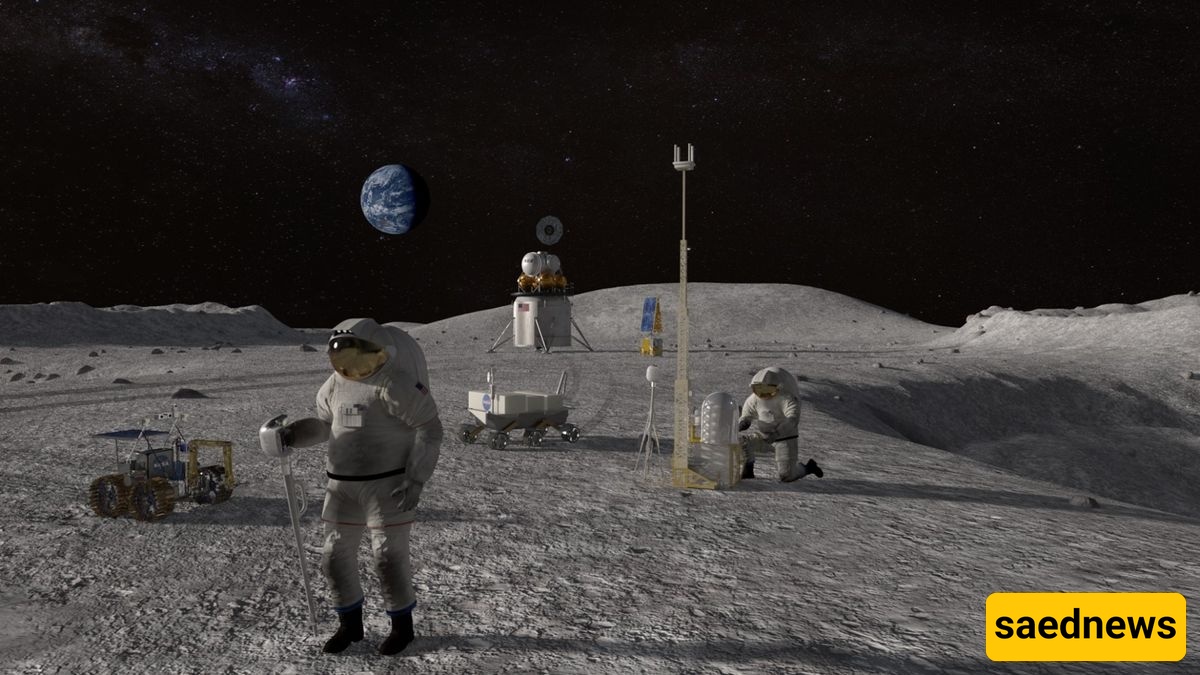SAEDNEWS: NASA has announced its intention to make the United States the first country to install a nuclear reactor on the surface of the Moon.

According to Saed News, citing Reuters, at a time when space rivalries among the world’s major powers have reached a new peak, NASA has unveiled a bold plan to install the first nuclear reactor on the surface of the Moon—once again signaling that the United States’ goal goes beyond mere exploration; it aims to shape the future of humanity’s presence in space. Unlike past missions that were largely symbolic or scientific, the project to build and install a nuclear reactor on the Moon carries much deeper and more strategic implications. This step marks the beginning of an era in which energy, infrastructure, and permanent presence in space become the main pillars of power.
According to the announced plans, NASA, in cooperation with the U.S. Department of Energy and leading private technology companies, intends to transport a small, portable nuclear energy system to the Moon before the end of this decade. Designed as a space-based power plant, the system must be capable of generating electricity reliably and safely in the Moon’s harsh and low-light environment. Unlike solar panels, which rely on sunlight and lose efficiency during the Moon’s long nights, a nuclear reactor can continuously provide the energy needed—for manned missions, research stations, or even subsurface resource extraction.
The question is: why now? The answer lies in the global trend of redefining priorities in space. The Moon is no longer just a scientific or romantic destination; it has become a strategic stage for the future of technology, defense, and the global economy. Various countries, especially China, are developing their own ambitious plans for permanent settlement on the Moon. In this context, the United States does not want to remain merely a participant—it wants to define the game. Placing a nuclear reactor on the Moon is not only a demonstration of America’s technical superiority but could also lay the foundation for establishing permanent bases, inter-orbital missions, and even extraction of vital resources such as water ice or helium-3.
A key part of this plan hinges on close cooperation between the government, industry, and scientific institutions. NASA has announced that the project—called Fission Surface Power—is being developed in collaboration with companies such as Lockheed Martin, Westinghouse Electric, and Intuitive Machines. These companies are tasked with designing reactors that not only function in the Moon’s extreme conditions but are also fully operational in terms of safety, transportability, and deployment. These partnerships represent a new model in American space policy: the government as strategist, and the private sector as innovator and developer.
At the same time, the project faces significant technical and safety challenges. The nuclear reactor must withstand extreme temperature fluctuations, space radiation, and potential meteorite impacts. Additionally, transporting such a reactor into space requires strict adherence to the highest safety standards, as any leak or malfunction could have serious consequences—for the space environment and for the United States’ international reputation. For this reason, the project is under the full supervision of energy and nuclear safety authorities as well as international organizations.
However, the political and geopolitical dimension of this effort arguably surpasses the technical aspects. According to many experts, deploying a nuclear reactor on the Moon could mark the beginning of a kind of “infrastructure regime” in which access to resources and energy becomes easier for some countries and more difficult for others. The U.S. might eventually use these infrastructures as bargaining chips in international negotiations or even as tools to establish a space bloc—just as control over oil routes was a cornerstone of geopolitical power in the last century.
On the other hand, this move could also fuel a space arms race. While NASA has repeatedly emphasized that the reactor is intended solely for peaceful purposes, the dual-use nature of nuclear technology inevitably raises global concerns. Countries like China and Russia may interpret this initiative as a prelude to the militarization of space and pursue similar or even deterrent systems in response. Therefore, serious discussions may emerge within international institutions such as the United Nations regarding new regulations on the use of nuclear energy in space.
From a futures studies perspective, installing a nuclear reactor on the Moon is a step that could also pave the way for human missions to farther planets like Mars. If humanity is to build interplanetary stations or even settle on other planets in the not-so-distant future, sustainable energy independent of sunlight will be an undeniable necessity. In this context, small and portable reactors could form the backbone of space energy infrastructure.
In conclusion, NASA’s move to place the first nuclear reactor on the Moon is not merely a technological project; it is the symbol of a new era in space competition, energy, and global politics. This move could become a model for other countries in the future, but many questions remain about its environmental, political, and legal implications. Still, one thing is certain: space is no longer a neutral and empty frontier; it has become a real battleground for energy, dominance, and the future of humanity. With this initiative, the United States has taken a major step to remain ahead in this race.

